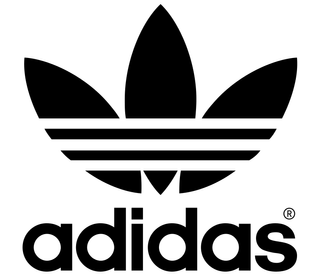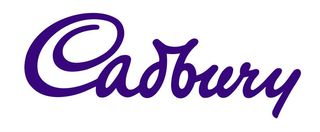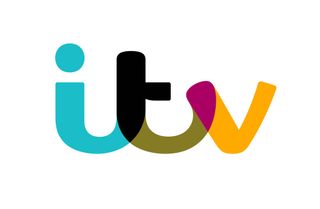Logo design is one of those areas of graphic design that looks easy, but can be fiendishly difficult to get right. So classic logos that have stood the test of time can offer some handy pointers when you come to work on your own designs.
In this post, we look at seven logos that became world-famous, and explore how they were designed and the lessons we can learn from their success.
01. Apple

Many urban legends have arisen about the meaning behind the bite in the apple of the computer giant’s logo, ranging from a reference to the Bible story of Adam and Eve to a pun on the word ‘byte’. In fact, the truth is more boringly straightforward, according to Rob Janoff, who designed it in early 1977 while working at advertising and PR agency Regis McKenna.
Quite simply, it was important that the design would scale, and Janoff found that when his apple design shrunk down to a small size, it looked like a cherry. Adding the bite made it clear, however, that it was still an apple at any size.
If the importance of your logo design being able to scale was important in the 1970s, it’s even more important in today’s world of tablets and smartphones (ironically, a situation for which Apple itself is partially responsible). But that’s not the only lesson to be learned here.
In short, a logo doesn’t need to explain anything
The success of the Apple logo also teaches us that a logo needn’t be literal. There’s little to suggest it represents a computer company, any more than the VW logo needs to portray a car, or the Dominos logo needs to include a graphic representation of a pizza.
In short, a logo doesn’t need to explain anything: in the words of logo pioneer Paul Rand, the fact that it’s “distinctive, memorable and clear” is what’s important.
Get the Creative Bloq Newsletter
Daily design news, reviews, how-tos and more, as picked by the editors.
02. Adidas

Another example of how a logo doesn’t need to be too obviously explanatory is the Adidas logo. The famous three Adidas stripes, originated by company founder Adolf Dassler and first used on its running shoes in 1949, have no specific meaning but were simply created to publicise the brand through the athletes who wore it in international races.
The first proper Adidas logo, known as the Trefoil, appeared in 1971 when the brand expanded into leisure wear. Its three-leaf shape is said to symbolise the world’s three main landmasses (the Americas, Europe/Africa, and Asia), although that’s hardly obvious if you’re not told that.

In 1990, a second design, known as the Performance logo, was designed by creative director Peter Moore for the company's Equipment range of sporting goods. Here the three Adidas stripes form the shape of a mountain, symbolising the challenges faced by athletes.
Both logos have continued to be used concurrently, providing another useful lesson for logo designers: that a brand can benefit from a multiple set of logos as long as they are based on a clear, unifying system (in this case, the original three stripes).
03. Co-op

The Co-operative Group, commonly known as the Co-op, is the largest consumer co-operative in the UK. Owned by more than four million active members, its history stretches back to 1844. Its best known logo was designed in 1968 by an in-house team in collaboration with US agency Lippincott & Margulies. The first to bring all the various Co-op businesses together in one identity, its minimalist ‘cloverleaf’ design was both cutting-edge for the time, and instantly recognisable.
The design underwent a number of changes over the years, but none of the new versions quite matched the iconic status of the original. So in 2016, North was widely applauded when it successfully pitched the idea of reinstating its classic 1968 logo.

The London agency recalled the identity manual from the Co-op's archives and used it as a foundation for redrawing and redeveloping the logo in a way that brought it up to date while retaining its strong recognition factor. And the success of this revival shows what a powerful tool a company’s heritage can be in logo design.
That doesn’t mean designs shouldn’t normally be tweaked and updated over time. In fact, this article by Computer Arts editor Nick Carson expressly warns against the rush to copy North’s strategy in general. But it does signify that a company’s heritage needs to be respected and treated with care – as the aborted Gap and University of California logos prove.
04. Cadbury

A number of brands have successfully 'owned' a colour via their logo design, and Cadbury offers a classic example.
Based on the signature of William Cadbury, the Cadbury script logo first appeared in 1921 on the company’s transport, although it wasn’t until 1952 that it appeared on its major brands. It’s been tweaked and simplified over the years, but it still retains its essential identity, including its distinctive purple colour. So much so that Cadbury has succeeded in trademarking its specific hue (Pantone 2865c) with the UK Intellectual Property Office, despite a legal challenge by Nestle.
Colour scheme aside, the Cadbury’s logo also points to another potentially successfully strategy in logo design: the use of a signature-style script to give a personal, inclusive feel to a brand. Other great executions of this idea can be seen in the Coca-Cola and Disney logos, for example.
05. ITV

While owning a colour can be a great asset to a brand, that doesn’t mean every brand has to do so. In fact, going in the opposite direction and taking a more flexible approach to your logo colours can also work well, as ITV’s recent experience has shown.
In early 2012, the UK television network was undergoing a period of rapid change and needed a complete brand identity to span five TV channels and a variety of off-air and digital environments. So ITV’s in-house creative team worked with Rudd Studio, led by Matt Rudd, to develop a friendly logo based on handwriting.
The team came up with the concept of ‘colour picking’ for the logo, to better fuse it with the imagery of the TV channel. The idea is that five parts of the logo take their colours from the promos and idents they accompany. This means it avoids becoming repetitive, creating variety and the opportunity to reflect events or seasons, and it still feels fresh after five years.
06. Nike

First introduced in 1971, the Nike Swoosh has become one of the most recognisable brand emblems in the world. So it’s perhaps surprising that it was originally designed by a young graphic design student, Carolyn Davidson.
She was paid $35 by the company’s co-founder Phil Knight, who’d spent the previous seven years importing Japanese running shoes but now wanted to launch his own brand of shoes. He asked Davidson to make sure the design conveyed motion and that it did not look similar to the three stripes of Adidas.
The student created several designs, and the Swoosh was picked in a hurry against a background of tight production deadlines. "I don't love it," Knight told her, "but I think it will grow on me." Perhaps the biggest lesson the Swoosh can teach us then is that, like a great song, a great logo doesn’t always reveal itself on first encounter.
So instead of rushing to judgement when you see a logo design for the first time: take a step back, consider the thinking and system behind it, how it fulfils the brief, and how it will work across a range of use cases. It’s considerations like this, rather than any initial ‘wow’ factor, that are the real keys to successful logo design.
07. Amazon

Founded in 1994 as an online bookstore, by 2000 Amazon had hugely expanded its operations. So owner Jeff Bezos wanted a new logo to reflect the idea that a customer could find everything they needed on the site.
He turned to Turner Duckworth, which began by adding a simple arrow to the logo, to convey that everything Amazon sold was delivered. The team also reasoned that because Amazon only existed online, they needed to bring in a human element, so they curved the arrow into the shape of a smile.
Even though this logo has been in place for 17 years now, you’ll find many customers have never noticed either of these aspects of the design, and are surprised when you point them out. But that doesn’t mean it’s not a successful logo: quite the reverse.
Like the negative-space arrow in the FedEx logo, this design works on a subliminal level, and conveys the brand values brilliantly whether you realise it or not. The main lesson, then, is not to try too hard: in logo design, subtle can be successful.

